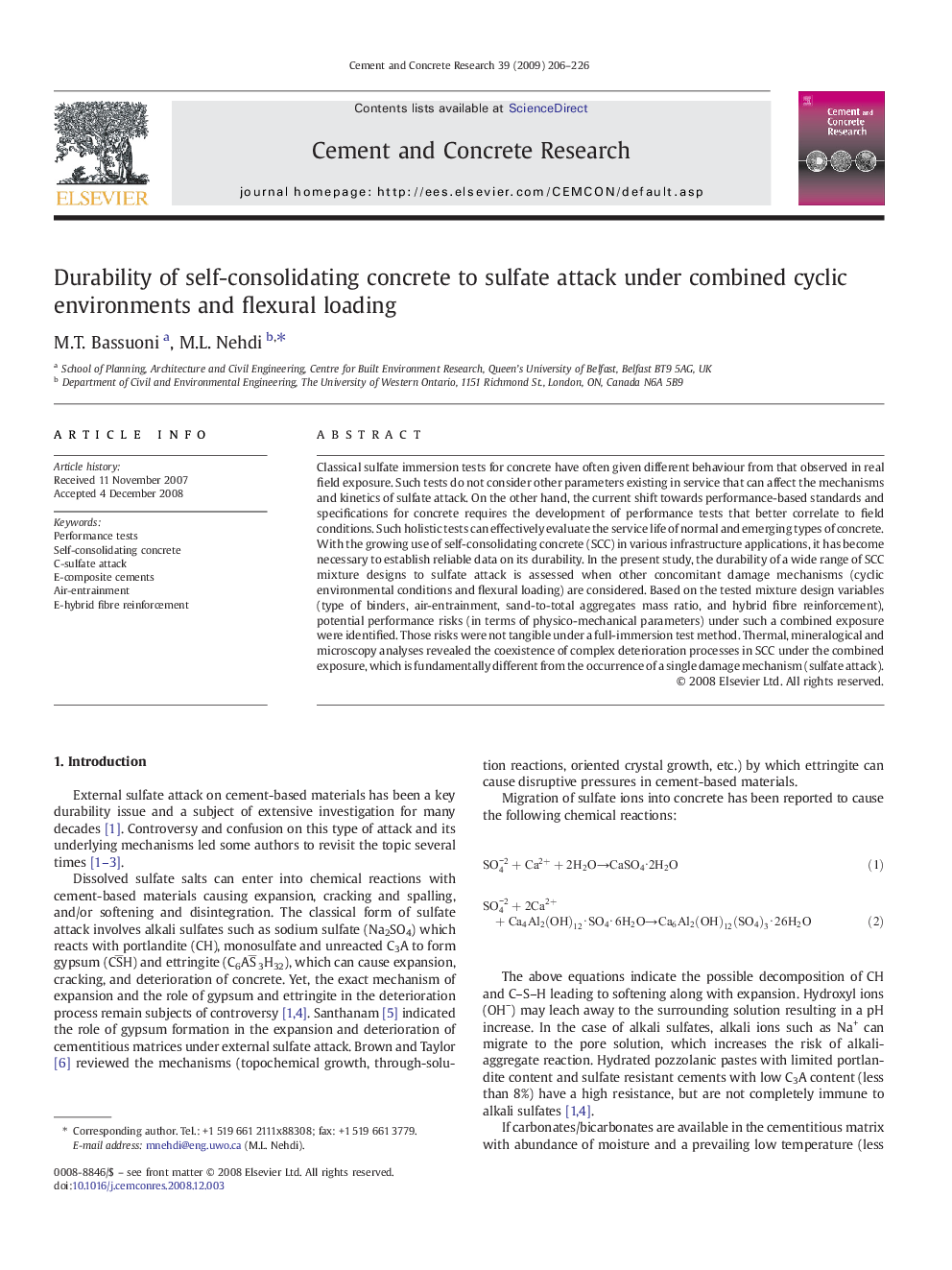| Article ID | Journal | Published Year | Pages | File Type |
|---|---|---|---|---|
| 1457462 | Cement and Concrete Research | 2009 | 21 Pages |
Classical sulfate immersion tests for concrete have often given different behaviour from that observed in real field exposure. Such tests do not consider other parameters existing in service that can affect the mechanisms and kinetics of sulfate attack. On the other hand, the current shift towards performance-based standards and specifications for concrete requires the development of performance tests that better correlate to field conditions. Such holistic tests can effectively evaluate the service life of normal and emerging types of concrete. With the growing use of self-consolidating concrete (SCC) in various infrastructure applications, it has become necessary to establish reliable data on its durability. In the present study, the durability of a wide range of SCC mixture designs to sulfate attack is assessed when other concomitant damage mechanisms (cyclic environmental conditions and flexural loading) are considered. Based on the tested mixture design variables (type of binders, air-entrainment, sand-to-total aggregates mass ratio, and hybrid fibre reinforcement), potential performance risks (in terms of physico-mechanical parameters) under such a combined exposure were identified. Those risks were not tangible under a full-immersion test method. Thermal, mineralogical and microscopy analyses revealed the coexistence of complex deterioration processes in SCC under the combined exposure, which is fundamentally different from the occurrence of a single damage mechanism (sulfate attack).
